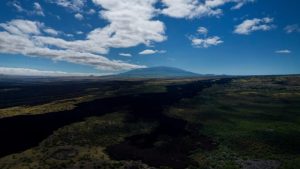Introduction
For centuries, Mauna Kea, the revered dormant volcano in Hawaii, has stood as a symbol of cultural significance for Native Hawaiians. At the same time, it has become a global beacon for scientific exploration due to its optimal conditions for astronomical observation. However, the convergence of these two interests has sparked debates, protests, and challenges as diverse groups seek to honor the mountain’s cultural significance while supporting scientific progress.
Cultural Significance of Mauna Kea
Sacred Grounds: To the Native Hawaiians, Mauna Kea represents more than just a geological wonder; it embodies their spiritual beliefs and ancestral connections. It’s regarded as a celestial realm where the heavens meet the Earth, revered for its role in creation stories and as a site for ceremonies and burials.
Cultural Preservation: Preserving Mauna Kea isn’t just about conserving a natural landmark; it’s about safeguarding a heritage. It necessitates respecting traditions, acknowledging historical injustices, and recognizing the indigenous perspective on stewardship.
Scientific Exploration and Progress
Astronomical Importance: Mauna Kea’s high altitude, stable atmospheric conditions, and minimal light pollution make it one of the premier locations for astronomical observation, enabling groundbreaking discoveries about the universe.
Advancements in Knowledge: The telescopes on Mauna Kea have contributed significantly to our understanding of space, unlocking mysteries of distant galaxies, black holes, and the origins of our universe. Continued research promises even greater revelations.
Challenges and Controversies
Conflicting Interests: The clash between cultural reverence and scientific advancement has led to protests and legal battles. Indigenous groups and activists argue that the construction of observatories desecrates sacred land and violates cultural rights.
Environmental Impact: Concerns about the ecological footprint of observatories, including disruption to wildlife and fragile ecosystems, add complexity to the issue.

Seeking Collaborative Solutions
Dialogue and Respect: Establishing a platform for open, respectful dialogue between stakeholders is crucial. Recognizing the validity of each group’s concerns fosters understanding and creates the foundation for finding common ground.
Inclusive Decision-Making: Engaging all stakeholders, including Native Hawaiian communities, scientists, government entities, and environmentalists, in the decision-making process ensures that multiple perspectives are considered.
Compromise and Coexistence: Exploring compromises such as limiting further construction, decommissioning older telescopes, or relocating some facilities while preserving the essential scientific research infrastructure can strike a balance between cultural preservation and scientific progress.
Cultural Integration: Introducing measures to integrate indigenous knowledge and cultural practices within the scientific community, respecting traditional beliefs and engaging in collaborative research efforts, can bridge the gap between cultural heritage and scientific exploration.
Moving Forward Together
The path to a harmonious coexistence between cultural preservation and scientific exploration on Mauna Kea is challenging but not insurmountable. It requires commitment, empathy, and a shared vision that acknowledges the value of both cultural heritage and scientific advancement.
Education and Outreach: Promoting awareness and education about the significance of Mauna Kea to both local and global communities can garner support for collaborative efforts.
Legal and Ethical Framework: Implementing robust legal and ethical frameworks that respect indigenous rights while fostering scientific innovation can provide a structured approach to navigate future challenges.
Long-Term Sustainability: Ensuring the sustainability of any agreed-upon solutions involves ongoing monitoring, reassessment, and adaptation to changing circumstances.

Conclusion
The journey towards finding collaborative solutions for Mauna Kea’s complex confluence of cultural significance and scientific exploration requires a commitment to mutual respect, shared understanding, and innovative compromises. By honoring the heritage of the land while continuing to push the boundaries of scientific discovery, we can forge a path that respects the past, embraces the present, and enriches the future for all.




